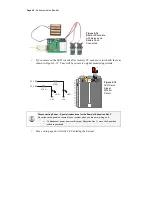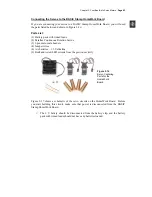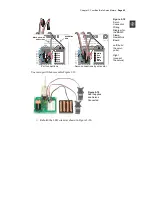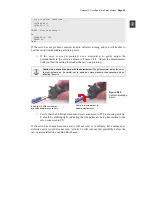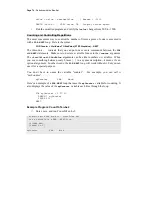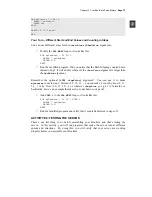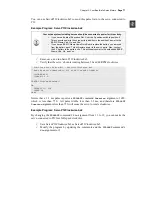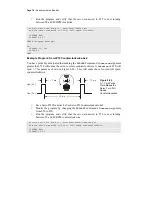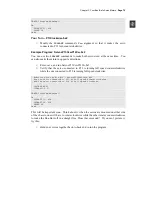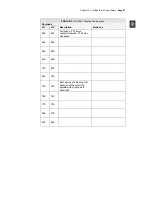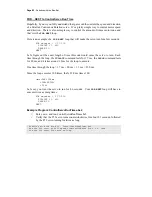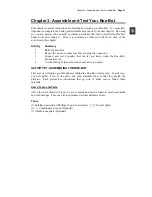
Page 76 ·
Robotics with the Boe-Bot
This is an example of subsystem testing. Subsystem testing is a worthwhile habit to
develop, because it isn’t any fun to take a robot back apart just to fix a problem that you
could have otherwise caught before putting it together!
Subsystem testing
is the practice of testing the individual components before they go into
the larger device. It’s a valuable strategy that can help you win robotics contests. It’s also
an essential skill used by engineers worldwide to develop everything from toys, cars, and
video games to space shuttles and Mars roving robots. Especially in more complex devices,
it can become nearly impossible to figure out a problem if the individual components haven’t
been tested beforehand. In aerospace projects, for example, disassembling a prototype to
fix a problem can cost hundreds of thousands, or even millions of dollars. In those kinds of
projects, subsystem testing is rigorous and thorough.
Pulse Width Controls Speed and Direction
Recall from centering the servos that a signal with a pulse width of 1.5 ms caused the
servos to stay still. This was done using a
PULSOUT
command with a
Duration
of 750.
What would happen if the signal’s pulse width is not 1.5 ms?
In the Your Turn section of Activity #2, you programmed the BASIC Stamp to send
series of 1.3 ms pulses to an LED. Let’s take a closer look at that series of pulses and
find out how it can be used to control a servo. Figure 2-25 shows how a Parallax
Continuous Rotation servo turns full speed clockwise when you send it 1.3 ms pulses.
Full speed ranges from 50 to 60 RPM.
Vdd (5 V)
Vss (0 V)
1.3 ms
1.3 ms
20 ms
www.parallax.com
standard servo
Figure 2-25
A 1.3 ms
Pulse Train
Turns the
Servo Full
Speed
Clockwise
What’s RPM?
Revolutions Per Minute. It’s the number of full circles something turns in a
minute.
What’s a pulse train?
Just as a railroad train is a series of cars, a pulse train is a series of
pulses.

